
The first review of Over the Top with Jim was pretty devastating … I was 48 and I’d resigned from my job to sit at home alone and write the book on a card table I’d bought for $30.
I had no idea what I was letting myself in for.
Back then, in 1989, the Literature Board of the Australia Council financed a magazine, Australian Book Review (ABR), to ensure that – in a country dominated by American and British books – Australian authors got a fair hearing.
So I was really looking forward to hearing what the ABR had to say: did I have a future as a fulltime author, or was I kidding myself?
Yet all I got in the ABR was a TPR – a Trivial Pursuit Review.
You know how it was with that popular ’80s board game Trivial Pursuit: the first response that came into your head – if one came at all – was usually the answer.
Thus, when Sydney reviewer Stephen Matchett saw that Over the Top with Jim was an Australian childhood autobiography his brain immediately answered “Clive James”.
So he wrote in his review in the ABR: “The James Effect (‘if he can do it for his boyhood in Kogarah then I can do it for Brisbane, Bendigo, Boggabri’) strikes again!”
Then, when he saw the book was set in Queensland, his automatic response was “corruption … before it became a gigantic pork barrel”.
After typing “Brisbane”, Matchett couldn’t help but come up with the cliché: “the big country town”.
And, when he found my book was set in south Brisbane, he of course answered correctly “David Malouf” … who grew up in an adjoining suburb.
“Lunn’s Brisbane is not a patch on that which appears in Malouf’s fiction…” Matchett wrote.
A bit unfair, comparing my efforts with a world-famous author, I thought.
But, in fact, according to various Australian book reviewers over the decades, I have been not only “no David Malouf”, but also “no Laurie Lee”, and “no Clive James”, and “no James Joyce”!!
Also, apparently, I’m even “no Paul Theroux”.
Whereas I’d really much, much, much rather be: “no George Orwell”.
Matchett then predicted a grim future for non-world-famous Australian writers like me.
“There are far too many ‘tales of being ordinary’ breeding on our bookshop shelves as it is,” he wrote in our government-funded Australian Book Review.
“Mr Lunn’s book, whilst better written than most, is simply a new addition to this bursting-its-culturally-insular-seams genre.”
You can probably imagine how I felt, as I slumped in front of my $30 green card table which was all I could afford.
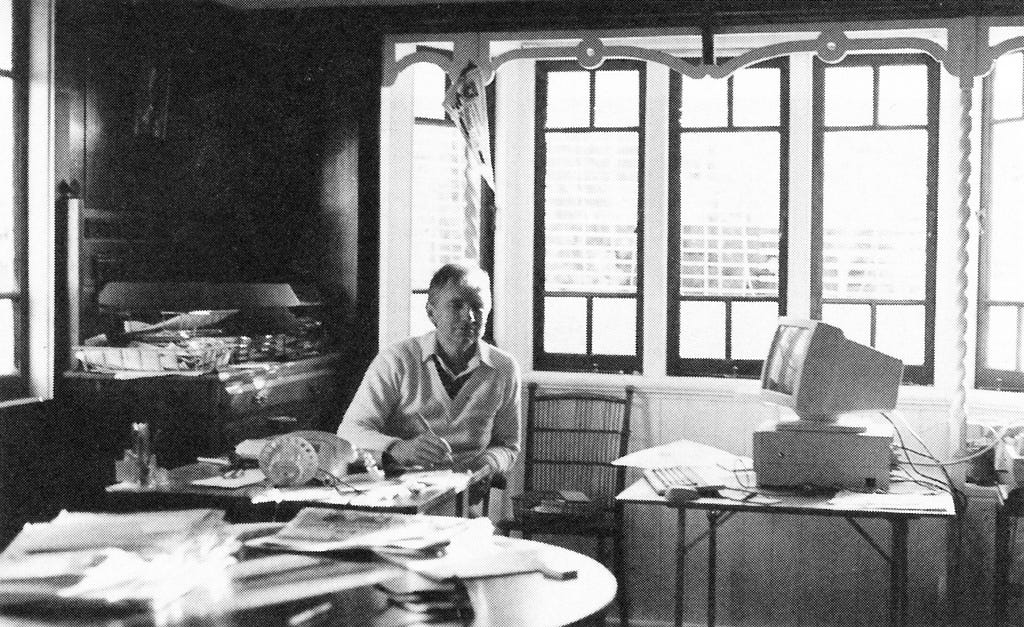
Particularly when Matchett concluded his review with: “There is no overwhelming reason to read this book.”
In other words: don’t bother reading my story.
Yet so many readers loved the little yellow book.
Thank goodness those with a lot of empathy immediately wrote to console me.
An Irish nun living in Brisbane wrote “to beg you to write the sequel as soon as possible” and added: “The ABR’s reviewers have the southern bias against Queensland, so please don’t even read the reference to your book in Dec. issue”.
Professor Duncan Waterson wrote from Macquarie University in Sydney saying:
“Matchett is a drongo … I hope [his review] does not deter any of us – or our audience – from telling perceptive tales out of school. It won’t … [we] will be around long after shallow commentators have shuffled off.
“More reminiscences please!”
Letters started to pour in from people saying my book was a turning point in their life; or made them feel good about their Australian origins; or had snapped them out of a depressed mood.
Maybe being “culturally insular” could be a good thing.
I started to realise the important role recollection plays in the human mind.
Memory is automatic, but recollection comes from the human ability to reason and reflect; we are our memories: recollected and unrecollected.
Mrs Glenys Dean knew this.
She wrote from Enoggera, Brisbane, something for me to treasure: “You have given people back their childhood”.
A Catholic nun wrote from Boroko in Papua New Guinea.
“Did you remember that when we were growing up it was said that every time you made someone laugh you got a holy soul out of Purgatory? Well I’ve been reading Over the Top with Jim, and Purgatory must be nearly empty by now.”
A Chief Librarian, Jenny Gleeson, wrote from Canberra: “I couldn’t put it down. Chapter eleven, Travelling South, made me laugh till I cried! It was just like every trip my family did in its Zephyr as we travelled to Glen Innes from Sydney … though I must confess we never had a mattress on top!”
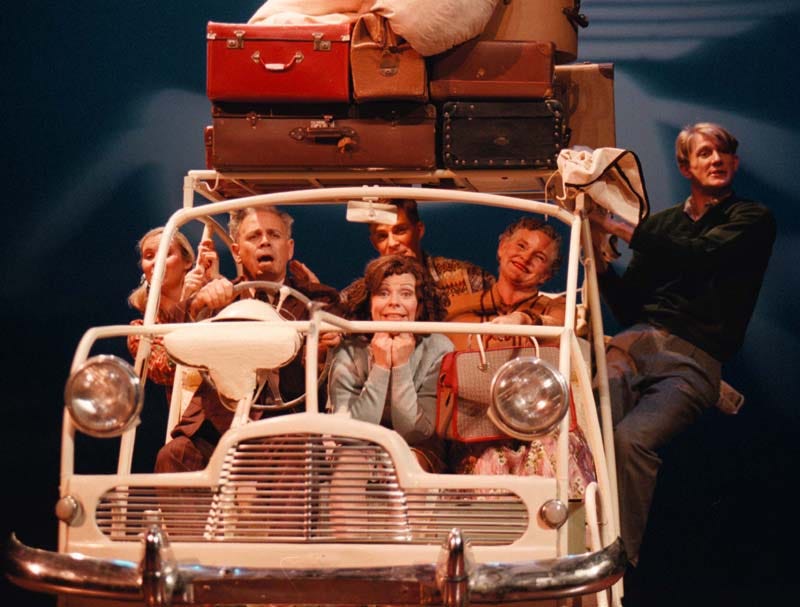
A north Queensland radio announcer who had difficulty recollecting his life wrote: “I can’t remember anything about my childhood – so your childhood has become my childhood”.
Actors tell me it is easier to make people cry than to make them laugh, so I was pleased when Prudence Gregan wrote: “[Your book] has afforded my family hours of happy reading … I laughed until the tears literally rolled down my face”.
And Kath Pipett began: “What a tonic is laughter! I mean when the whole of one laughs – which happened to me this morning while reading Over the Top.”

While Cornelius G. Bryne wrote from Coorparoo, Brisbane, to say: “That’s about the nicest, most loving book I’ve ever read … it is the outpouring of a loving heart and a gentle spirit.”
When I write, I like to tell readers things they’ll never read anywhere else ... not even on ChatGPT.
So I’ll tell you here that the only way an Aussie non-fiction book, published in Australia, gets overseas is if a reader here posts it!
Gary Walker wrote from Jamaica to say that when he received Over the Top in the mail he read it “compulsively … naturally, exercising that discipline learnt at Gregory Terrace [my old secondary school] of not indulging too much in a good thing.
“I loved your book … it is the autobiography of many of us.”
Ornithologist Doris Watt wrote from America to say, “even with being on different continents I was still reminded of many events of my childhood (not Catholic) in the Arkansas Ozarks.”
Victor Syrmis of Chocolate Photo wrote a poignant letter:
“I am two years your junior and presently live in New York and Los Angeles but I am Queensland-born … your book brought back memories I had locked away for 40 years.
“I lived all your experiences as a child from age 8 through 17. The memory of the water running down the gutter and putting a paper boat into it devastated me …
“You were writing about me with every line. I’m truly over-whelmed and it’s impossible to choose which effect to bring to the fore – they all come at once ...
“I have been in the United States for 25 years and away from Brisbane for 30. Your book has inspired me to go back to my memories.”
An Adelaide accountant had a similar thought and moved to Brisbane immediately after reading my book, got married, had a son whom they named after me – and invited my wife and me to the wedding.
So many hundreds of letters arrived that the Post Office wrote to tell me to get a bigger letterbox.
My “culturally-insular tale” even appealed to the Professor of Law and Social Theory at the University of Kent at Canterbury in England, Peter Fitzpatrick.
Professor Fitzpatrick wrote to say his friend Australian publisher Anne O’Donovan (“Pipsy” in the book) had sent him a copy.
“I just wanted to say directly that I immensely appreciate what you have done. It is so finely observed and so richly evocative that it could not help but have a great impact, and I was very moved by it.”
Funny then that Stephen Matchett found the book so ordinary.

In fact, I still haven’t read the Clive James Sydney childhood memoir, and it was never my ambition to emulate what James did … never crossed my mind even.
But I did read Malouf’s Johnno in the 1970s after returning from seven years writing overseas, which showed me that you could write successfully about a Brisbane childhood. (George Johnston’s My Brother Jack had an even greater impact: perhaps because I also had an older brother Jack who was also a boxer.)
I was very pleased 18 months later to see that the ABR had asked Matchett – among other Sydney and Melbourne reviewers - to list the “most impressive” books of the 1980s.
This was for a special ABR edition called “Top Shelf”.
I wanted to see what sort of book this reviewer Matchett actually liked.
Matchett began, once again, by complaining that too many Australians had had books published. “Far too much was simply bad. Virtually all … were forgotten within a couple of years.”
He said “impressive” to him generally defined merit as “an exercise of an author’s craft sufficient to ensure that, among the mass, a book will be remembered with respect and mayhap affection”.
Well that much was true.
Being remembered with respect and affection, and not forgotten within too short a time, was the hope I’d harboured for Over the Top with Jim.
However, Matchett certainly wasn’t thinking of my book.
He named as his “most impressive book for a decade” – you guessed it: The Transformation of Colonial Virginia 1740-1790 (University of North Carolina Press, 1982) writing: “This book deserved far more attention outside the universities than it attracted”.
I’m sure it did.
Epilogue
Rather than “breeding on bookshop shelves”, in 1991 Over the Top with Jim became officially the biggest-selling non-fiction book in Australia for that year.
While book industry insiders say “books have the shelf-life of yogurt”, Over the Top is still in print today – 34 years later – with ABCBooks.
It has had three publishers and sold 200,000 copies.
It spawned:
.An ABC weekly national radio serial listened to by 1.6 million Australians every Sunday morning.
.A stage play with music.
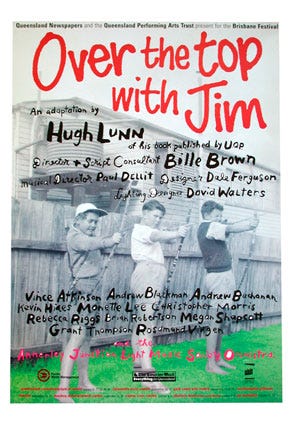
.The first-ever Brisbane Festival in 1996 convinced Bille Brown to take time off from the Royal Shakespeare Company to come home and put on a work of his choice for the Festival.
They expected Bille Brown to do something Shakespearian, but instead he announced on arrival:
“My sister, Rita, sent me over a little yellow book from Brisbane and it made me laugh and it made me cry – which is what theatre is supposed to do.
“So I’m putting on Over the Top with Jim!”
The show was so successful it then toured Queensland.
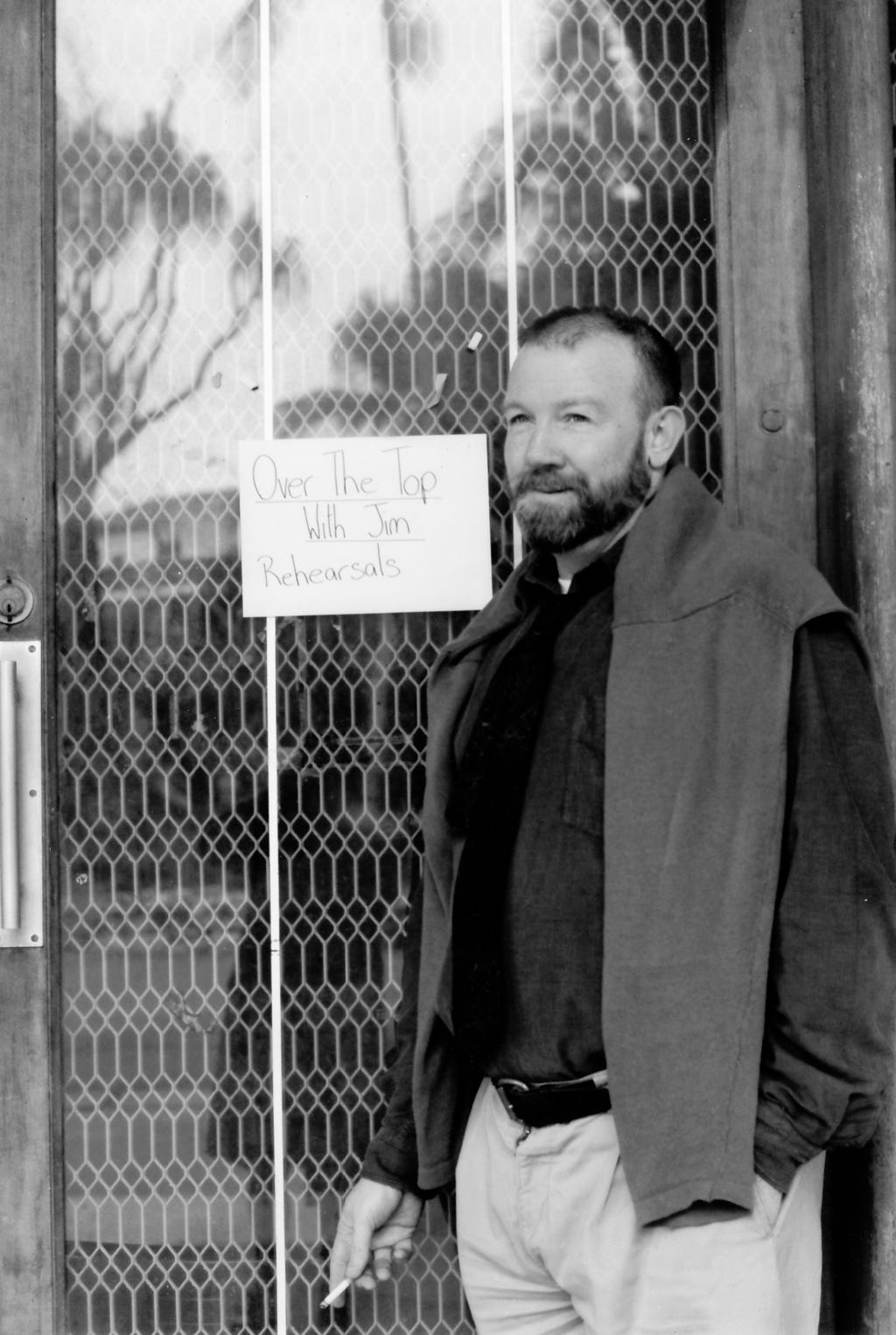
.The Over the Top with Jim Album was designed by David Mackintosh [see The Illustrator Confesses All] to unite photos of the characters, time and place. This magic came about because readers sent requests for photos. The original book had no pictures – unusual for a non-fiction title - because its editor, Dr Craig Munro [see Duelling Pencils] thought Over the Top read more like a novel.
.Tim O’Halloran published a series of postcards designed by David Mackintosh featuring scenes from the Album.
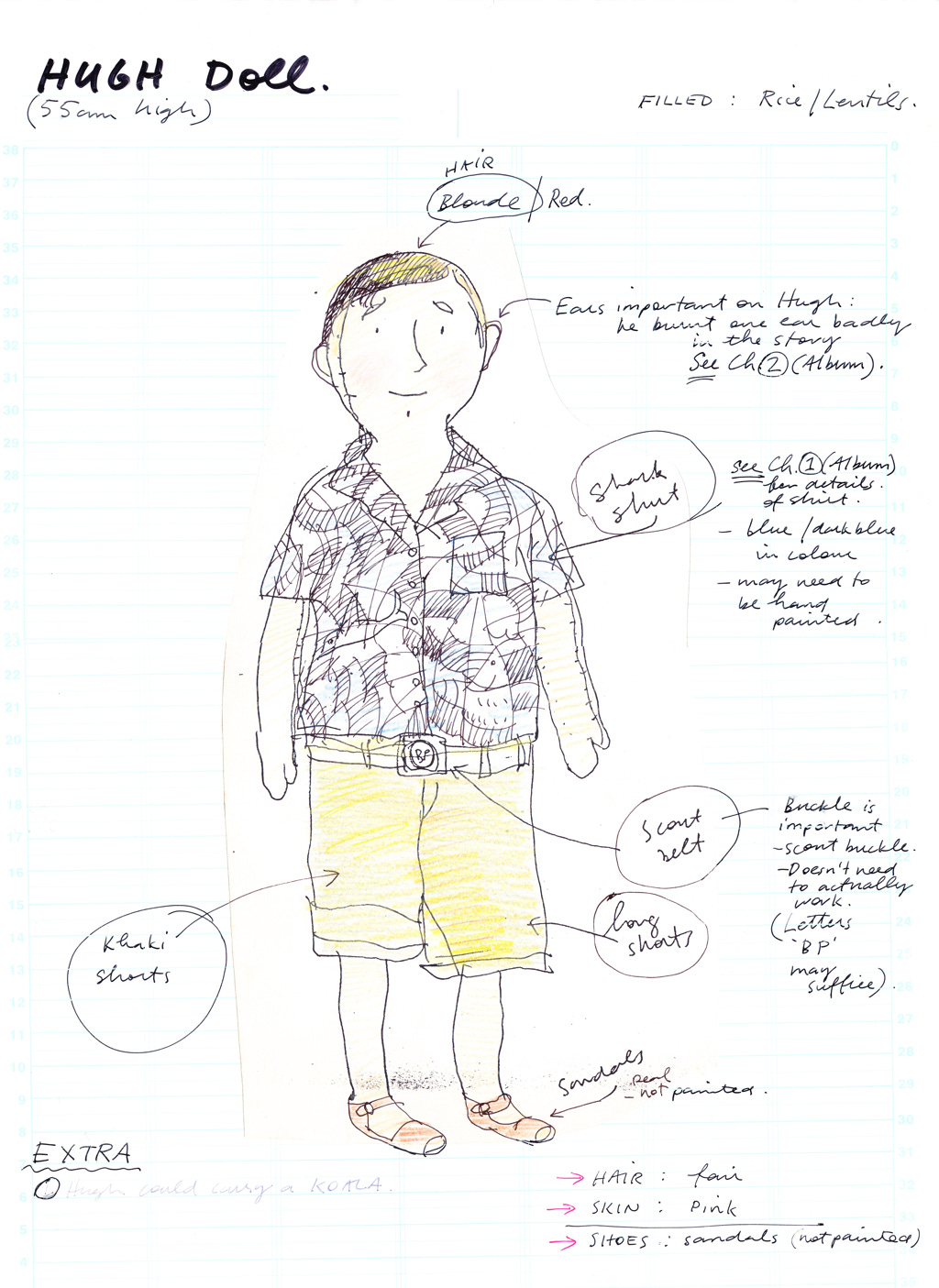
.David Mackintosh also re-imagined the main characters to make a set of Over the Top with Jim soft toys and dolls, which featured in a glass case in the foyer during the play’s Brisbane season.
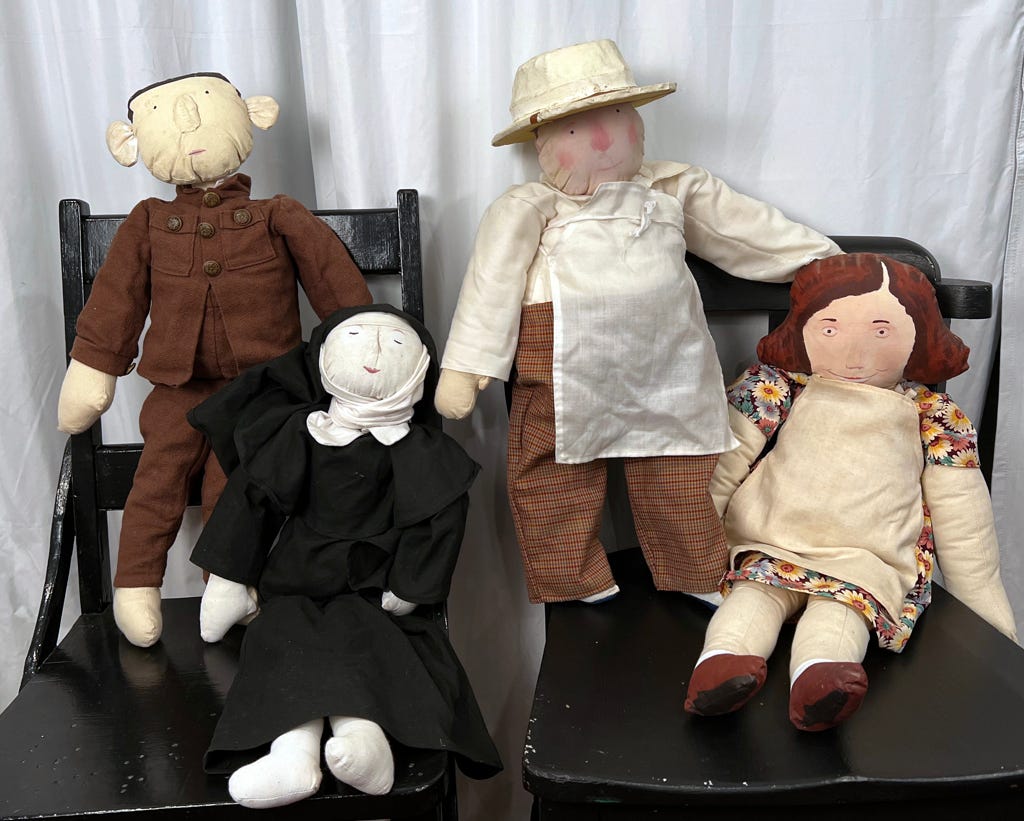
.The ABC screened a TV Documentary called Over the Top with Hugh by NSW filmmaker Bridget Goodwin.
.The book was even set as a core text for Grade12 in NSW.
.University of Queensland Press published the sequel Head Over Heels in 1992.
.When ABCRadio rang to say their listeners wanted more, I wrote a further 26 Over the Top episodes – later published as More Over the Top with Jim.
Thus Over the Top with Jim became more than anything I dreamed of when I resigned my job as a feature writer on The Australian after 17 years and bought that little card table so cheaply from my librarian friend, Carol-Ann McVinish.
It has certainly been remembered “among the mass with respect and mayhap affection”.
What Over the Top did show was that Australians want to read about their own lives, just like Americans and Cambodians do … if given the opportunity.
Which means they first need to hear that such stories exist … and to not have them dismissed out-of-hand in favour of West Virginia.
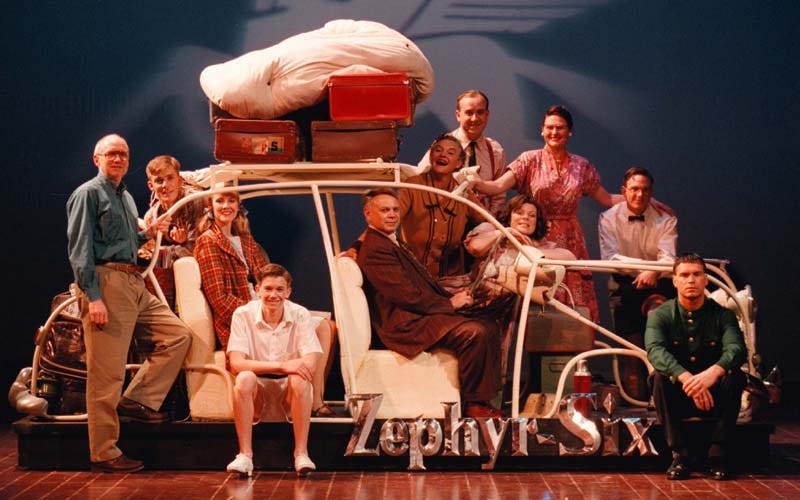


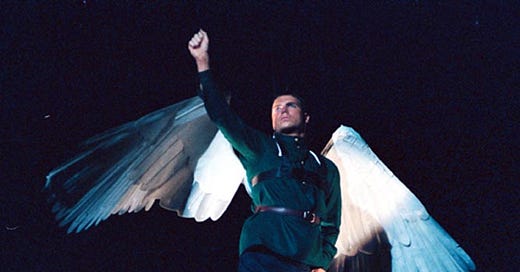




That's a great story about the children enjoying my book so much they refused to leave the room at big lunch and little lunch. t reminds me of the primary school teacher at Stafford who wrote to say, "when I read Over the Top with JIm to my class they purr". I'm glad to have had such an effect on school children.
You certainly came up with a great answer for that overly concerned father!
Author and newspaper Editor Peter Thompson sent this today from his home in London after reading this story:
Great piece, Hughie. 'Over the Top' did more than 'give people back their childhood', although that was one of the gifts. You actually gave South Brisbanites an identity that we could be proud of and an arena in which we could become successful people in our own chosen fields. You deserve all the kudos you have received over the years.